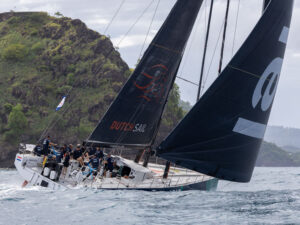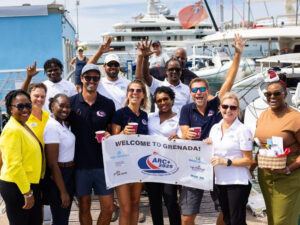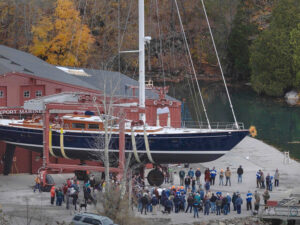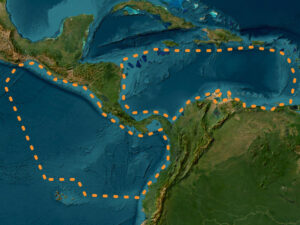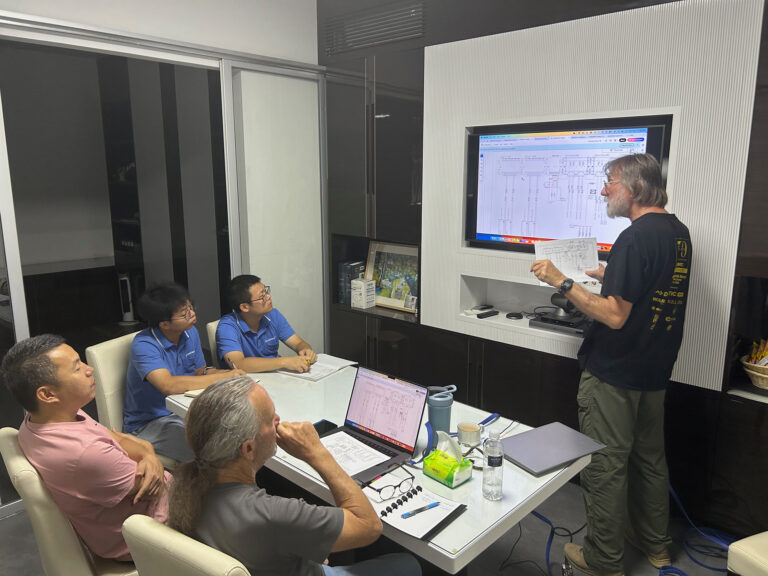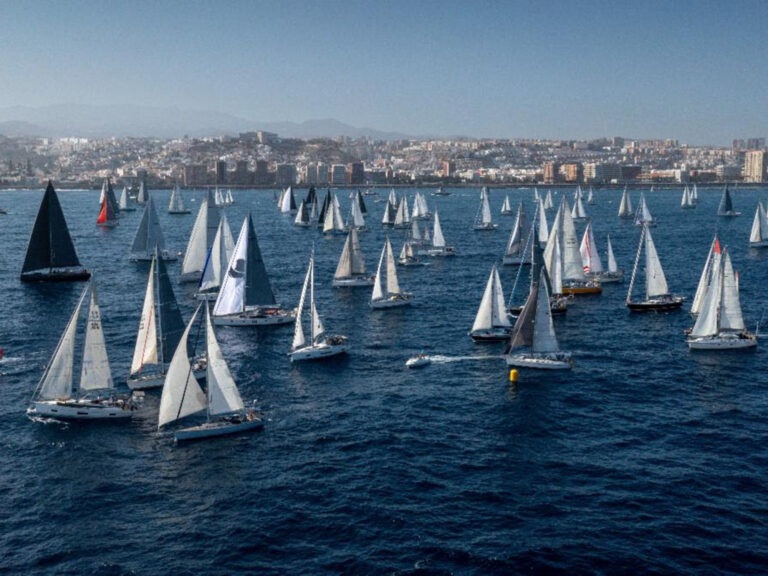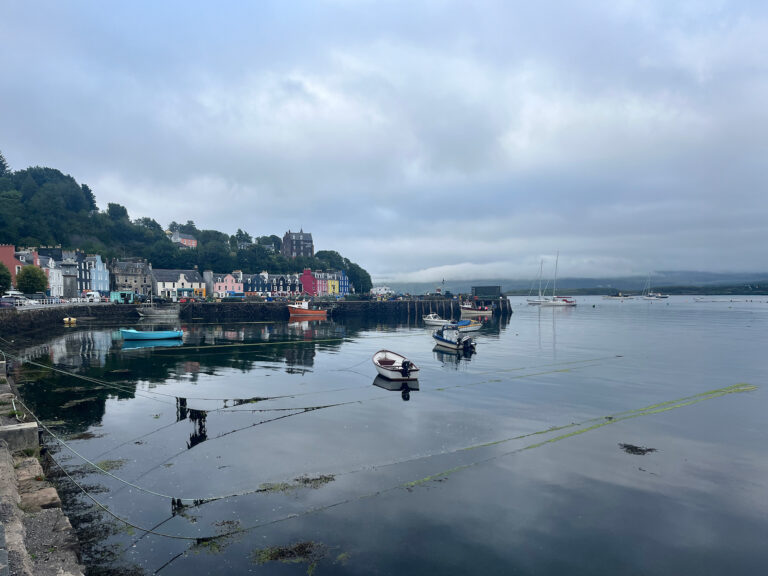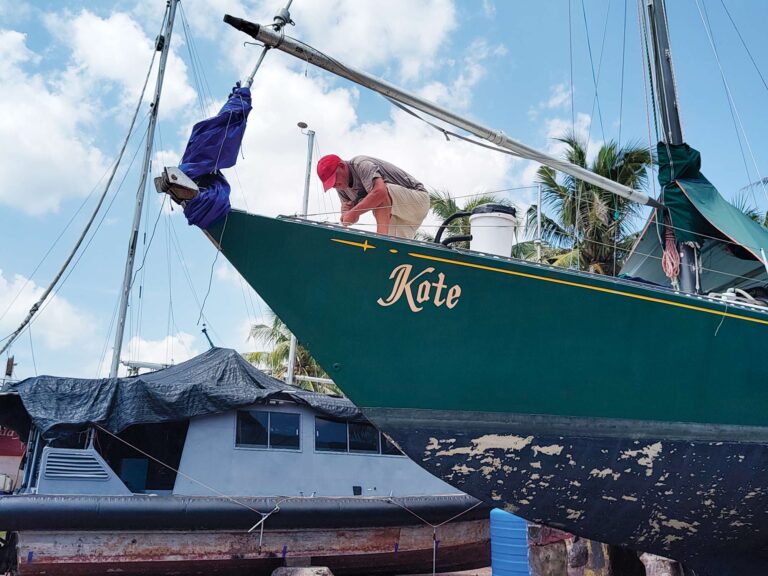
Shapiro Northern Light 368
When Rolf Bjelke and I first met in Fiji in 1980, the plastic dinnerware he had aboard Northern Light was pretty worn out. Granted, he’d used it since 1967, when he first placed it aboard his previous boat, a fiberglass 24-footer. On that mini-cruiser, the dinnerware sailed and raced with him around his home waters in Scandinavia. Later, it cruised with him to the Orkney Islands and came along for the transatlantic crossing to Miami.
In 1977, he brought the dishes aboard Northern Light, his new 40-foot steel cutter-rigged ketch, a French double-ender with seakindly lines reminiscent of those drawn by yacht designer Colin Archer.
The dinnerware traveled around the world via Cape Horn and the Cape of Good Hope to Sweden. During that circumnavigation, spanning the years 1977 to 1981, many people crewed for Rolf, cutting their food with serrated dinner knives and scratching the dishes’ surfaces. Over the years, every scar had turned brown. When I moved aboard Northern Light in 1982 and we started on our first voyage together, the marred plates came with us.
Rolf and I are both outdoor people and feel best when we’re surrounded by open land and vast seascapes. Our idea of cruising is to see parts of the world that one can’t reach except on a boat. Raised in temperate climates and loving winter activities, neither of us considers cold a hindrance. Because we’re curious about nature and Earth as a system, our ultimate goal became to reach the wilderness of the Antarctic Peninsula.
I suggested to Rolf that I, a novice to small boats, might benefit from a training trip, and I pitched an idea: “How does ‘North Ice, South Ice’ sound? We can go to the Arctic first. See how I do.”
Rolf agreed. From Sweden, we went north to Norway and Spitsbergen, then by way of Greenland to Boston. I didn’t jump ship, nor was I asked to. In Boston, shopping for some other galley gear, I happened to see a box of Corelle dinnerware.
“Rolf, look!” I said. “Unbreakable dinnerware that isn’t plastic.” My husband is a critical person. He has to check things out and make up his own mind. Perhaps the trait is the result of his years of skippering. Or perhaps it’s the reason why he’s a skipper. At any rate, he picked up a display piece and took it to a saleswoman. “Is this truly unbreakable?” he asked her.
The woman took the plate from him and hurled it like a Frisbee to the tile floor. It bounced a few times and landed unbroken against the base of a counter. “Does that answer your question?” she asked.

On its maiden voyage, the continuation of our Arctic-to-Antarctic expedition, the Corelle went through the Panama Canal to Tahiti, then down to the Roaring 40s and east to Chile and through Patagonia to the Antarctic Peninsula. In 1984, few yachts had been to the peninsula. There was little information; it was a voyage of exploration. Clothing wasn’t sophisticated in those days, and our heater wouldn’t run on the poor-quality kerosene available in South America.
After six weeks there, and one too many dramas, we were worn out, so we sailed back to Sweden. Over time, while we wrote and lectured about the voyage, the bad memories evaporated. We each came down with a bad case of polar fever. We renovated Northern Light with new high-latitude voyages in mind. She got a furling rig, a new cockpit, and floating sheeting-point tracks-all to make her easier to handle on solo watches-and a wing keel to improve the way she sailed. We also rebuilt the interior, improving the insulation and the heating system.
In 1989, with the boat a suitable polar abode, we sailed back to the Antarctic Peninsula and stayed for 16 months. We let the boat freeze into the fast ice and wintered over. We both still rate it as the best time of our lives. Every day we learned something new, firsthand, from observation. Entranced by the winter’s pastel light and removed from the daily onslaught of information, we put time on ice. We got to think our own thoughts.
When the thaw came, we planned to visit the subantarctic islands. We wanted to spend time in the realm of the albatross and see bigger penguins and more whales and seals. But our engine seized. A circumnavigation of Antarctica in the waters the Antarctic Pilot describes as “beyond the normal route of ships” was too risky without an engine. Instead, we sailed to Sweden.
Ashore again to install the new engine and rebuild the aft cabin, we wrote two books about wintering over and completed post-production of a one-hour television program.
Before leaving Sweden in 2000, I saw some ceramic mugs I liked, and I bought a yellow one and an orange one, thinking it’d be nice to have a little color around as long as they lasted. In Norway, we found some china bowls with broad rims that were perfect for serving pea soup Swedish style, where you take a spoonful of soup and graze it through mustard that’s been put on the rim. A Corelle bowl has no rim and “just simply does not work,” as Rolf is fond of saying. The same store also sold glass bowls. Deeper than Corelle bowls, they were perfect for serving soup or cereal at sea and a nice alternative to the plastic doggie dishes many use in the rough waters of high latitudes.

In January 2005, after finishing our circumnavigation of Australia, we were in Tasmania preparing to begin our circumnavigation of the Southern Ocean. I chatted with Rolf about the breakables. All were still whole.
“What do you think? Shall we put everything in a box and leave it at someone’s house?”
“Nyah,” he replied. “Let’s continue using them. If they break, they break.”
It’s possible to circumnavigate Antarctica nonstop in one season; at 45 degrees south, the total distance is only 15,480 nautical miles.
But to have time to visit the subantarctic islands that call to us, we planned to spend three consecutive summer seasons under way. It would be a voyage of learning and discovery. And a challenge. We called the expedition Pearls Around the White Continent.
The plan for the first leg would lead us southeast from Hobart, Tasmania, to Macquarie Island, an open roadstead at 54 degrees 30 minutes south, and to Auckland Island, at 50 degrees 45 minutes south, before a winter in New Zealand. The second summer, we’d go south again, back to Auckland Island and on to Campbell Island, at 51 degrees south, then sail nonstop 5,000 nautical miles to Chile. During the winter, we’d explore Patagonia. The plan in the third summer was to sail to South Georgia, then winter in South Africa, but plans seem to have a mind of their own sometimes-maybe we’d end up sailing across Drake Passage to the South Shetland Islands and the Antarctic Peninsula before sprinting up to Buenos Aires, Argentina.
We’d spend our fourth summer on the wildlife wonderland of South Georgia, then sail 8,700 nautical miles nonstop to the finish line in Hobart, closing the loop on a circumnavigation of the Southern Ocean.
Before our departure, our friend Katie gave us two handmade bowls. “These are to remind you of your friends in New Zealand,” she said. “Please come back again. In one piece.” She meant us, I think, not the ceramic works of art.
Now I had precious cargo to take care of. I didn’t really care about the other breakables we’d be using on a daily basis, but as we set out aboard Northern Light on our 22,500-nautical-mile circumnavigation via some of the wildest outposts on the planet, I cheated with Katie’s bowls: I swaddled them in bubble wrap and wedged them into a corner of the galley shelves.
Click here to read more installments of Pearls Around the White Continent.
Rolf Bjelke and Deborah Shapiro have been cruising together since 1982 on Northern Light. You can contact them at info@northernlightsail.se.
With plans in the works to send a couple to Mars, the BBC turned to high latitude adventurers and CW contributing authors Deborah Shapiro and Rolfe Bjelke to hear how they cope as a couple during long periods of isolation. Click here to read the BBC article.

